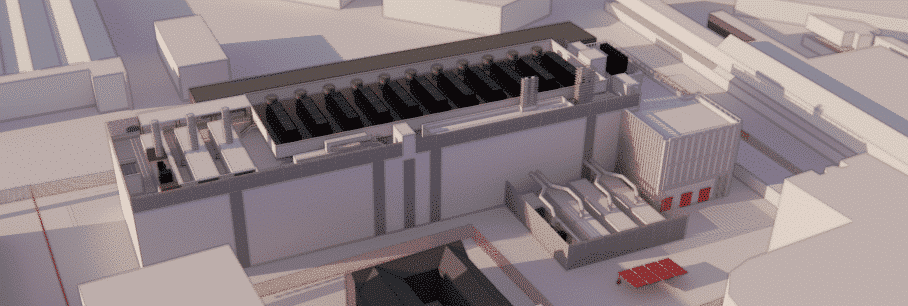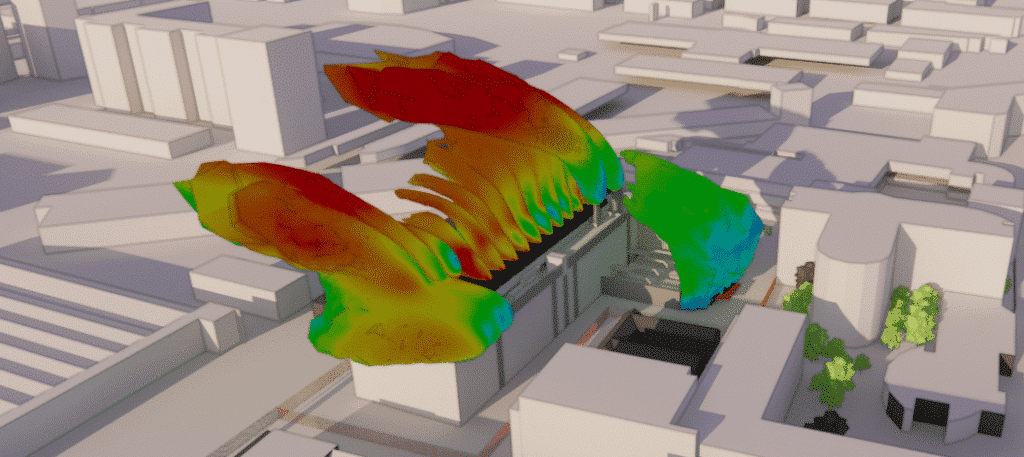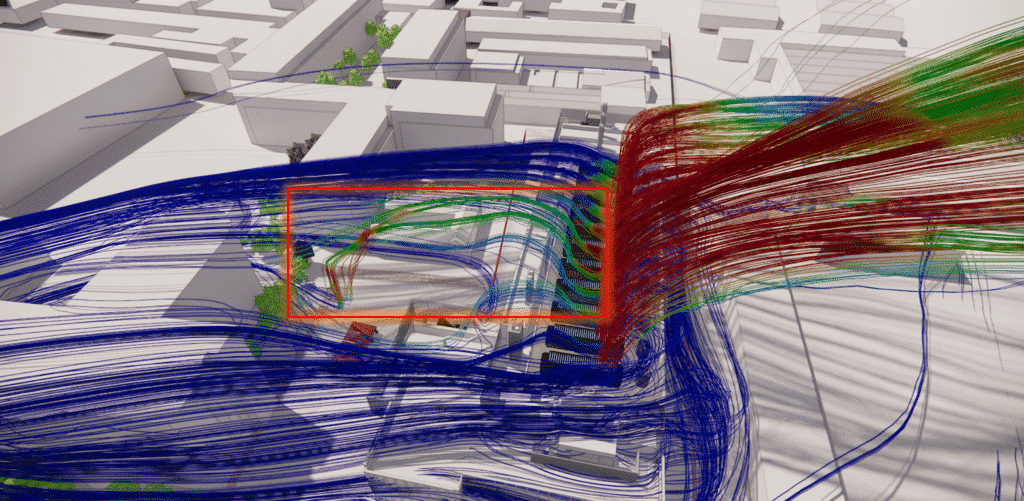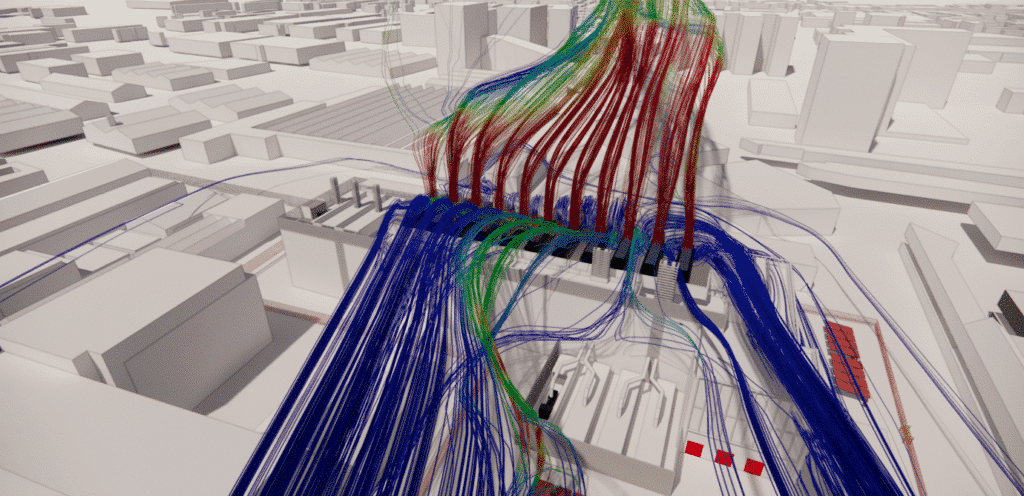Home » Data Center » External CFD simulation for data center » Data Center – Paris
Data Center – Paris
Study of thermo-aerodynamic phenomena associated with heat release from data center generators
EOLIOS Ingénierie has brought its technical expertise in the understanding and modeling of the thermal and aeraulic exchanges outside a data center in France in relation to the heat release of generator via the realization of CFD studies.
Data Center - Paris
Year
2023
Customer
NC
Location
France
Typology
External Data Center
Continue navigation :
Our other projects :
Latest news :
Project description
Cooling systems capable of meeting the evolving needs of the IT industry are required due to the increasing density of IT equipment (over 10 kW / rack). Cooling to remove heat from high-density IT equipment is a key consideration for data centers. These calories are evacuated by a series of systems arranged in high concentration on the roof.
This analysis examines the exhaust plume from a series of generators for a data center. The purpose of the process is to determine if the thermal exhaust from these systems can contaminate the supply air through looping phenomena.
For that, our EOLIOS engineers have simulated by the numerical calculation CFD the thermo-aerodynamic behavior of the various phenomena which take place outside the model.
A multitude of parameters were taken into account by our experts; radiant wall temperatures, thermal draught from manufacturing processes, wind pressure, internal resistance to vertical airflow; location and flow resistance characteristics of envelope openings; local terrain and the immediate impact of the building structure on the wind; and the presence of mechanical systems that circulate air around processes.
We verify the design of a system to improve the air mixing of air coolers located on the roof of technical rooms occupied by generators.
Creation of a digital study model
The installed generators are containerized generators that do not require any construction for easier installation than conventional generators.
The project has a total of 7 generators, 4 generators are installed in front of the building and 3 others are installed on the roof.
Simulation of the wind around the building
The first CFD simulations of the external aeraulics have highlighted different interesting phenomena that could allow the increase of the wind potential. The restriction of the passage section of the wind at the rear of the building allows the creation of a Venturi effect, therefore a local increase in speed.
Following this study, Eolios was able to propose different designs while respecting the different architectural issues. These conclusions gave rise to in-depth work with the design teams, in order to accentuate and make the best use of this local increase in speed.
Study of overheating
Overheating is a condition in which a system or appliance heats up to a level where it begins to operate less efficiently or cause damage. Overheating can be caused by poor ventilation, excessive use or poor maintenance. It can be avoided by ensuring that the unit is properly ventilated and by monitoring the use and maintenance of the unit.
Our engineers will highlight your potential design complications and problems as mentioned above. It is not insignificant, here, we have an air loop. Or the air is heated by the heat rejection of the generators located below and thanks to the dominant North-East wind, this air is absorbed by the air coolers which are supposed to cool your systems. Here, this phenomenon remains minimal and will create a slight overheating.
If this phenomenon were to recur on several devices, the overheating would severely damage the entire site and would no longer be sustainable. It is important to remember that this site is located in France where, in case of strong heat, the ambient air can have a temperature higher than 40°C.
Continue on this topic
Video summary of the study
Discover other projects
Engineering smoke extraction in a data center
External & internal CFD – Data Center Hyperscale
CFD Optimization – Data Center
Data Center – DC28 – Internal
Pressure loss study – Generator – Data center
Data Center – PA 22 – External
Technical premises – Data Center
Cooling optimization – Data Center
Data Centers – DC15.1 & DC15.2 – External
Data Center – Paris
Data Center – GAZ NOVEC
Data center – DC25 – Internal
Data center – DC17 – Internal
Data Center – DC10 – Internal
Data center – DC25 & DC26 – External
Data center – D14 – External
Data center – DC17 – External
DC23 – External






